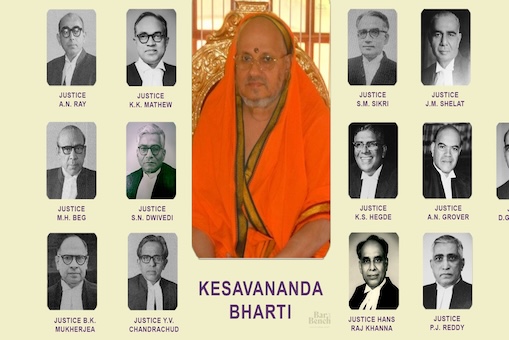Case Name: Kesavananda Bharati v. State of Kerala (1973)
Issue: The primary issue in this case was to determine the extent and scope of the Parliament's power to amend the Constitution of India under Article 368 and whether there are any implied limitations on this power.
Background: The case was heard by a 13-judge bench, making it the largest-ever constitutional bench in India’s history. The case arose from a challenge to the 24th Constitutional Amendment Act of 1971, which sought to restrict the Supreme Court’s power to review constitutional amendments.
Arguments and Rulings: The case witnessed intense and diverse arguments on the concept of “basic structure” of the Constitution. The petitioner contended that certain fundamental features or basic structure of the Constitution were beyond the Parliament’s power to amend. The government, on the other hand, argued that the Parliament possessed unlimited power to amend the Constitution.
In a landmark judgment, the Supreme Court delivered a split verdict with 7 judges supporting the government’s position and 6 judges supporting the petitioner’s stance. However, the case was ultimately decided by Chief Justice S. M. Sikri’s casting vote in favor of the petitioner, Kesavananda Bharati.
Key Takeaways: The judgment established the doctrine of “basic structure,” which implied that certain essential features of the Constitution, such as the supremacy of the Constitution, democratic and republican form of government, federalism, secularism, and the rule of law, are beyond the Parliament’s power to amend. It laid down the principle that while the Parliament possesses the power to amend the Constitution, it cannot alter its basic structure.
Impact: The Kesavananda Bharati case is considered a watershed moment in Indian constitutional jurisprudence as it upheld the supremacy of the Constitution and established a balance between the Parliament’s amending power and the core values enshrined in the Constitution.
Please note that my information is based on data available up to September 2021, and there may have been further developments or changes regarding this case after that date. It is always advisable to refer to the latest judgments and updates from reliable legal sources for the most current information.


